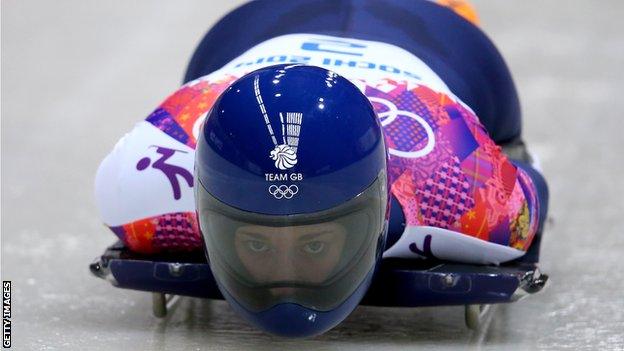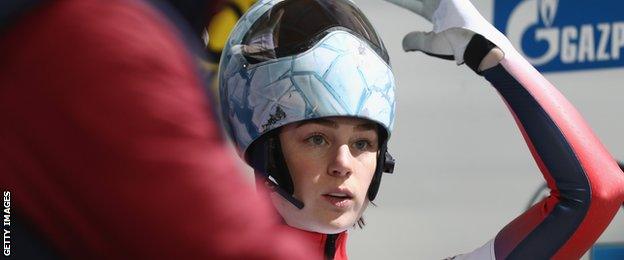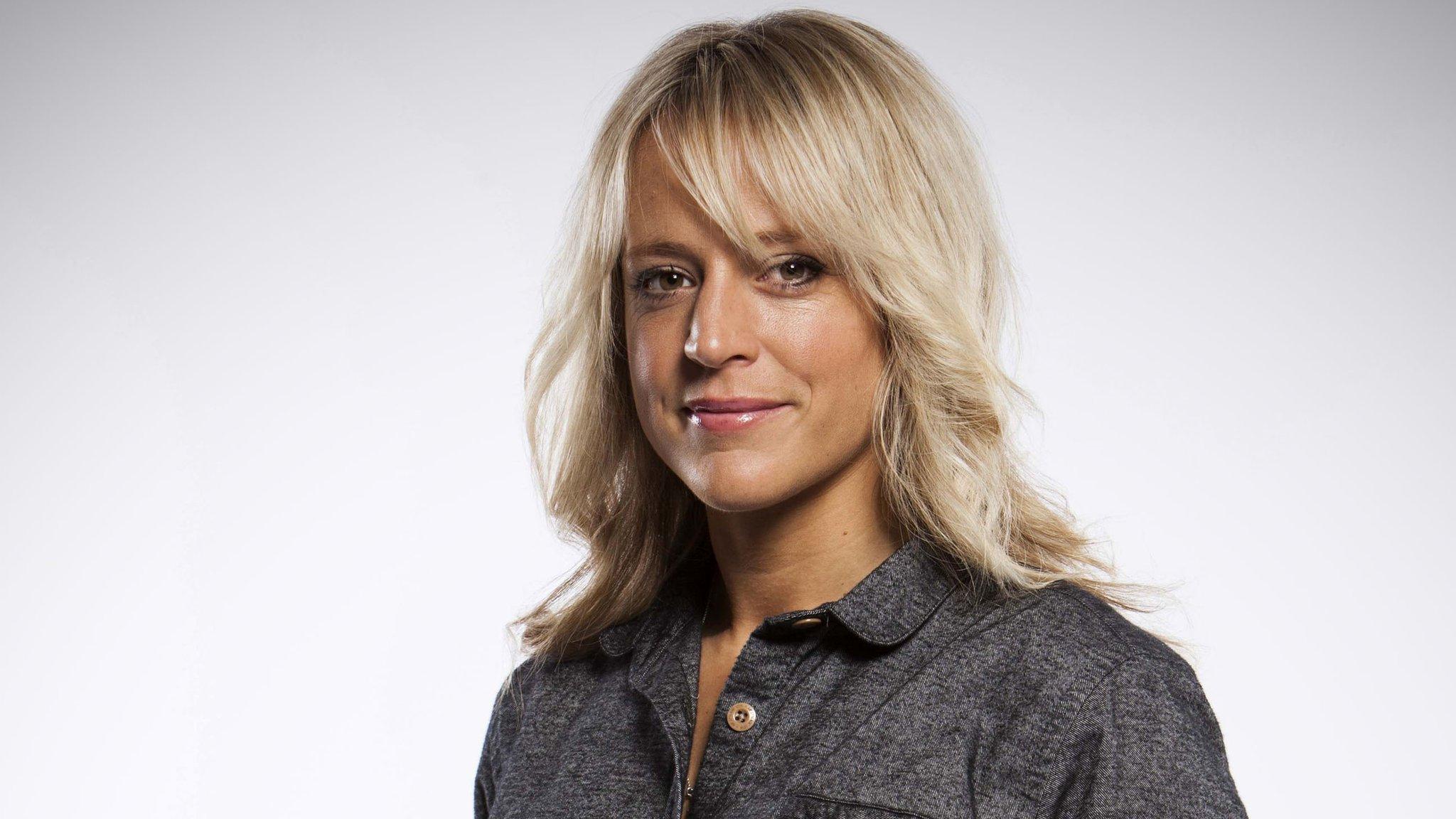Winter Olympics 2018: Guide to skeleton
- Published

Lizzy Yarnold won skeleton gold at the 2014 Winter Olympics, becoming only the second Briton to win the title
Skeleton at XXIII Olympic Winter Games |
|---|
Venues: Alpensia Sliding Centre Dates: 15-17 February Number of events: 2 |
Coverage: Watch live on BBC TV, Red Button, Connected TVs, BBC Sport website and mobile app. |
How it works
Competitors - known as sliders - hurtle headfirst down the ice course on a sled little bigger than a tea-tray. The fastest combined time of each slider's four runs decides the winner. The athletes use their upper bodies to steer, twisting their head and shoulders to transfer their weight.
Anything new since Sochi 2014?
No changes.
British prospects

Laura Deas will make her first appearance at the Winter Olympics, having represented Great Britain at all three World Championships since Sochi
Skeleton is Britain's most successful 21st century Winter Olympic sport, with the women leading the way. Lizzy Yarnold is aiming to become the first British athlete to successfully defend a Winter Olympic title. However, she has struggled this season and has been outperformed by team-mate Laura Deas.
Who to look out for
Martins Dukurs has dominated men's skeleton for the best part of a decade but there's a new kid on the block, Yun Sung-bin, who could make history for hosts South Korea. Germany's Jacqueline Lolling is the world champion but consistent Canadian Elisabeth Vathje will be a big threat.
I didn't know that...
There are about 300 spikes, all as thin as sewing needles, on the shoes worn by competitors to help them grip the ice and avoid fracturing it as they sprint at the beginning of their run. A track and field athletes' shoes typically have fewer than 10 spikes.
Great Britain's medallists
Total 4 - Gold 2 - Silver 1- Bronze 3
Most recent gold
2014: Women's skeleton - Lizzy Yarnold
Most recent medal
2014: Women's skeleton - Lizzy Yarnold
How do I get involved?
Fancy giving skeleton a go? Take a look at this Get Inspired guide.
- Published22 February 2018

- Published11 January 2018

- Published8 February 2018
